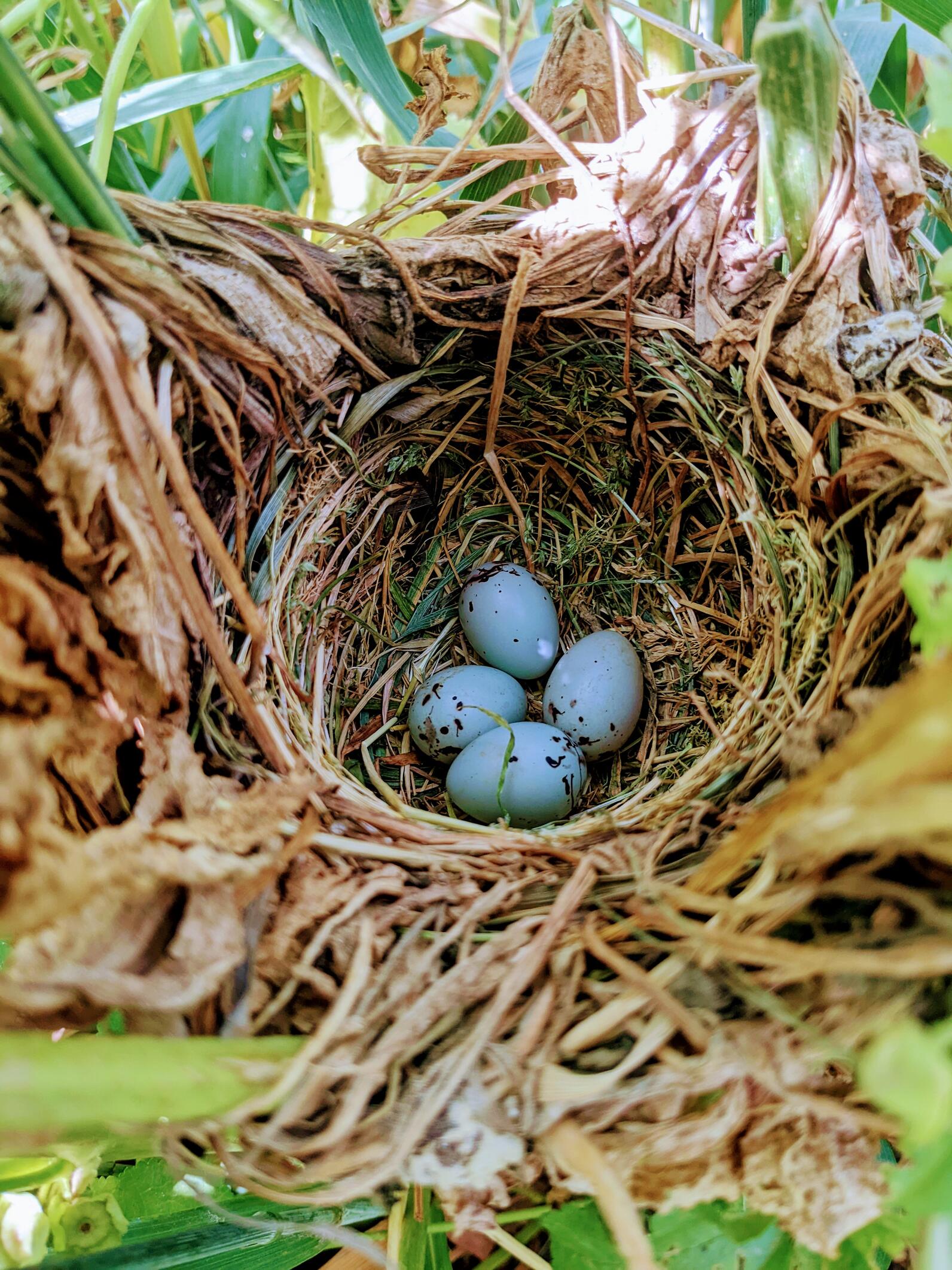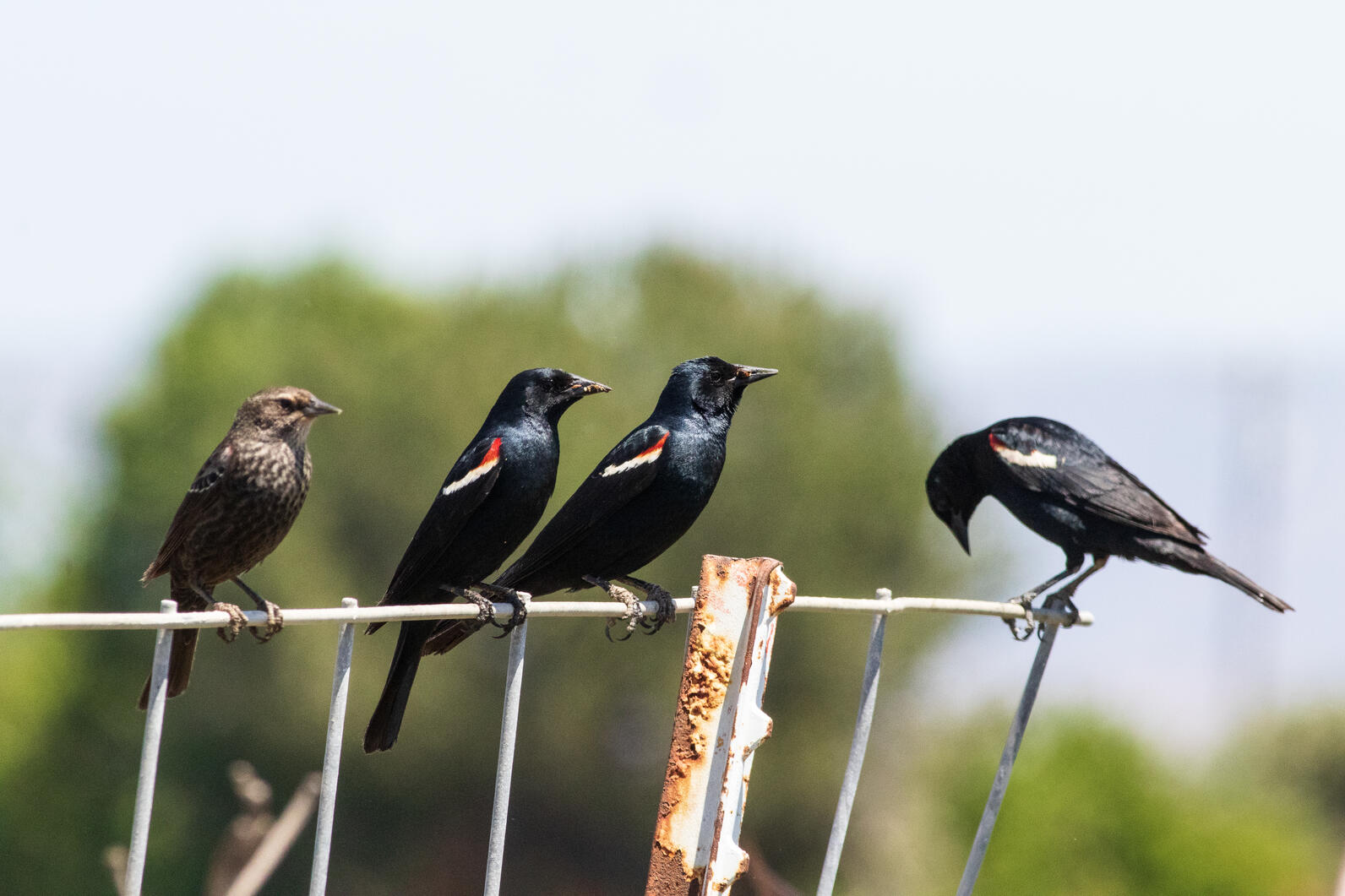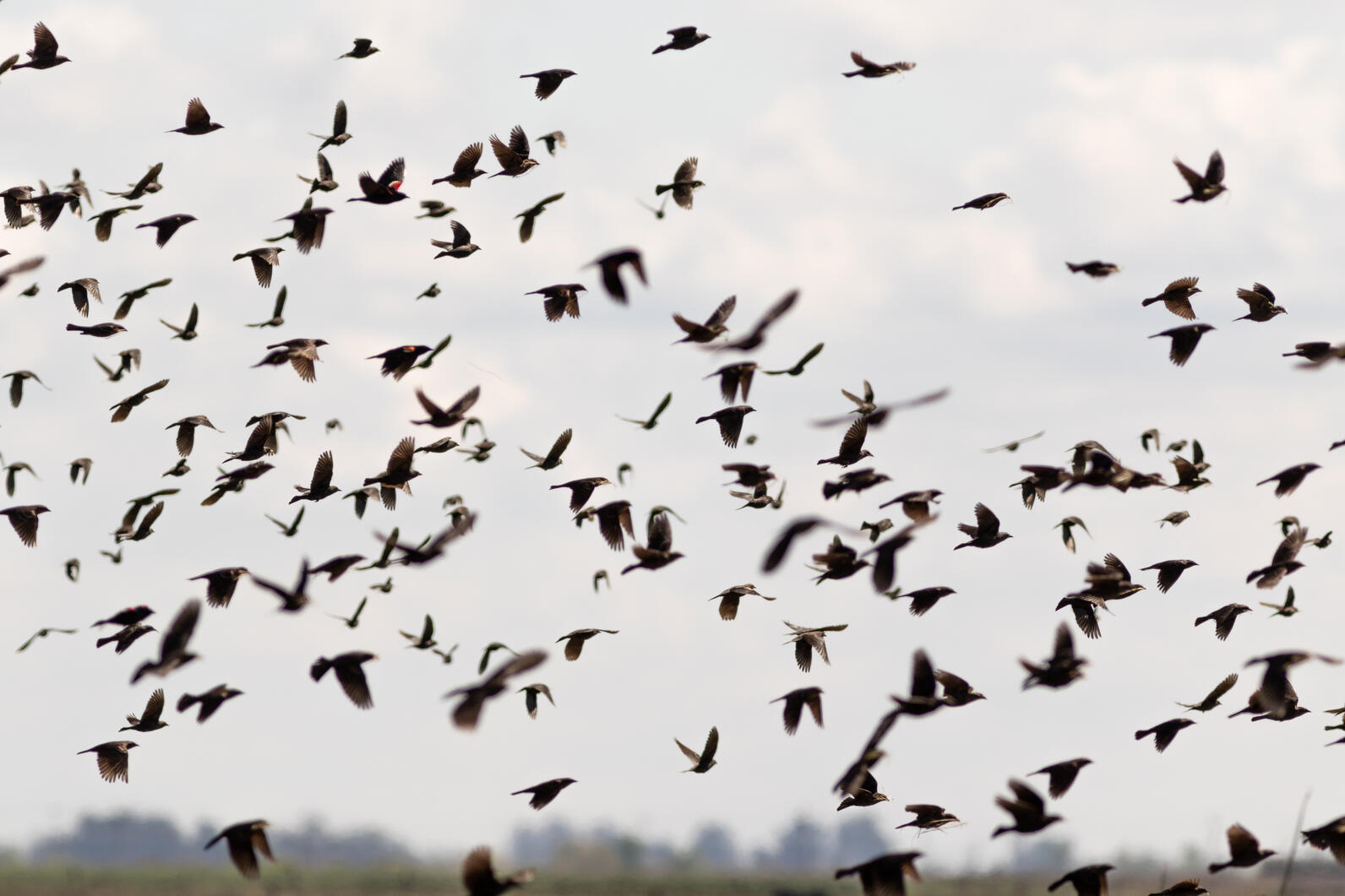What does a Tricolored Blackbird colony sound like during spring? Springtime is often envisioned as the season for love when flowers are in full bloom. Birds are showing off their colorful breeding plumage, and songbirds sing their most elaborate songs, often reserved only for this window of time. Unlike any other songbird, Tricolored Blackbirds, America’s most colonial land bird, have quite a different love repertoire.

When I first laid eyes on a Tricolored Blackbird colony, I was pleasantly surprised to hear what sounded like a multitude of screeching angry cats or squished toads rather than a harmonious melody. These songs might not be everyone’s cup of tea, but it certainly has worked in the males’ favor, attracting thousands of females into a colonial love flurry each year. There is something endearing and beautiful to watching thousands of birds go into a black-massed cacophony of screaming, nest-building, and egg-laying frenzy. For me, a wildlife biologist with an affinity for rare and misunderstood wildlife, it was love at first screech.

Tricolored Blackbirds were once one of the most abundant birds in California, numbering in the millions. They were as abundant to California’s wetlands as passenger pigeons were to America’s eastern skies. However, California’s Central Valley is not the landscape they once knew. What used to be some of the most biologically rich grasslands and wetlands in the country have now been replaced by agricultural fields and sprawling urbanization.
Tricolored Blackbird Colony
The Central Valley is now one of the nation’s leading agricultural suppliers, producing 1/3 of the country’s vegetables and 2/3 of its fruits and nuts come from California. In the early 1990s, it was possible to find ‘mega-colonies’, with more than 100,000 breeding birds making up a colony. Today, with most of their habitat gone, Tricolored Blackbirds have declined to 180,000 or fewer individuals. Not all hope is lost, however, as these birds are survivors that continue to fight for their place in this world.

As a seasonal field biologist supporting Audubon’s efforts to save Tricolored Blackbirds from extinction, I perform two essential functions: finding emerging colonies and monitoring existing ones to ensure the survival of the next generation. The journey in the search of Tricolored Blackbird colonies is not exactly luxurious, but it is fun for an adventurous soul like me. It entails driving for prolonged periods of time through dairy farms scattered throughout the Central Valley, following possible Tricolored Blackbird flocks across primitive dirt roads and paved ones where the locals race cars.
Upon discovering a colony, I estimate the number of individuals and report their location to our project partners to conduct outreach to the landowners. This communication facilitates getting landowners the support they need to ensure the colony is protected from harvest until all chicks have fledged.

After discovery, I monitor the colony every week and perform visual counts of fledglings and nest surveys by walking transects across active colonies. Farmers are often curious about my observations and have tons of questions. A question I am often asked is how Tricolored Blackbirds select their breeding grounds. Tricolored Blackbirds are picky when it comes to selecting a habitat and will make a choice based on 3 key components:
1) Availability of nutrient-rich insects nearby;
2) Source of freshwater; and
3) Thick, predator-proof vegetation to build their nests.
Dairy farms with silage fields, freshwater, and insects nearby provide this preferential habitat. To ensure Tricolored Blackbird colonies nesting in silage fields are protected, Audubon has established several partnerships, including with the Natural Resources Conservation Service, to support the farmers that delay the harvest of their fields to save the birds. Audubon’s collaborative work with agricultural groups, government agencies, farming communities, and conservation organizations have and continue to contribute to the long-term survival of the species. Currently, we are eagerly awaiting the results of this year’s statewide survey to let us know if Tricolored Blackbird populations are rising. This year, together with partners, we have protected thirteen colonies on eight farms across four counties!






